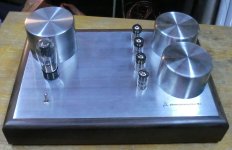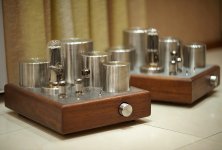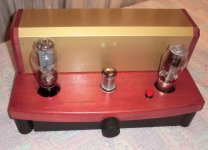Изготовлен мной с минимальным количеством конденсаторов. Я считаю, что именно они негативно влияют на звучание. Устройство состоит из 2 блоков - блока питания и самого корректора.


We need that translated into English please.
P.S. The image of the circuit is not very clear. Can you improve it?
P.S. The image of the circuit is not very clear. Can you improve it?
Made by me with a minimum of capacitors. I believe that they are the ones that negatively affect the sound. The device is 2 blocks - power supply and the corrector itself.
My opinion is that what is in the cathode has a negative effect on the sound, especially the capacitors. If there is a need to install resistors, then I only allow wire ones.

Last edited:
How did you realize the L in the EQ network? Air cored inductors? How did you calculate in the resistance of the inductors? Using a simulation?
The coils are wound on a permalloy core and placed in a double permalloy screen. I took the correction scheme from AN M 10

Many copies have already been broken on the topic of the influence of capacitors . There are already so many types of them created in prices from a cent to hundreds of dollars apiece . To some extent , profiting from fans of good sound . But gold capacitors also have an impact on the sound. Therefore, the radical solution is to get rid of this interference, not to apply them. something like this.Which is about the architypal "negative effect on the sound"!
Hi,
and what are the differences that apply to the useage of inductances instead of caps?
Are they less non-linear than caps?
Do they have a lower number of parasitic elements?
Do the parasitics impact less on the signal?
Well, we all know the answer is 3x no.
Which leads to the conclusion that they ´sound´ off of neutral ... or ´magical´ as You like to call it.
jauu
Calvin
and what are the differences that apply to the useage of inductances instead of caps?
Are they less non-linear than caps?
Do they have a lower number of parasitic elements?
Do the parasitics impact less on the signal?
Well, we all know the answer is 3x no.
Which leads to the conclusion that they ´sound´ off of neutral ... or ´magical´ as You like to call it.
jauu
Calvin
On the one hand, I am happy for you that you have your own opinion on this. On the other hand, I feel sorry for you that you find this a delusion. I have made several custom phono amplifiers using different designs and different components. And I have an idea of what the sound can be. I do not pretend to be an absolute statement. This is a forum, right? So there may be different opinions. I respect yours, although I know that you are wrong. I have been designing for a long time. More than 25 years. I will post several photos of correctors and an amplifier that I made earlier.Все эти предположения ложны.
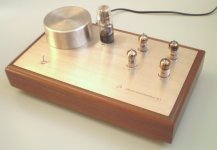
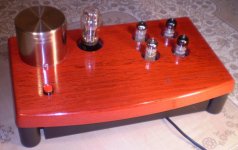
Attachments
If I'm wrong please post the measurements that prove it. (1) THD (2) S/NR (3) RIAA accuracy; and when you've done that please post your reasons in support of your assumptions. Until then there is nothing to discuss.
I have no task to convince you, stay where you are. Just then explain to me - why the sound from one corrector causes skin itching, and from another sends you to nirvana. The TND of both is less than 0.1 percent. and why did AN release the M10 for such a lot of money with such complex components as inductors. Although they could have installed a couple of capacitors for $1
Price: £105,600 ($137,280 at time of printing) M 10 .
Price: £105,600 ($137,280 at time of printing) M 10 .
Last edited:
- Home
- Source & Line
- Analogue Source
- RIAA Phono LR correction
